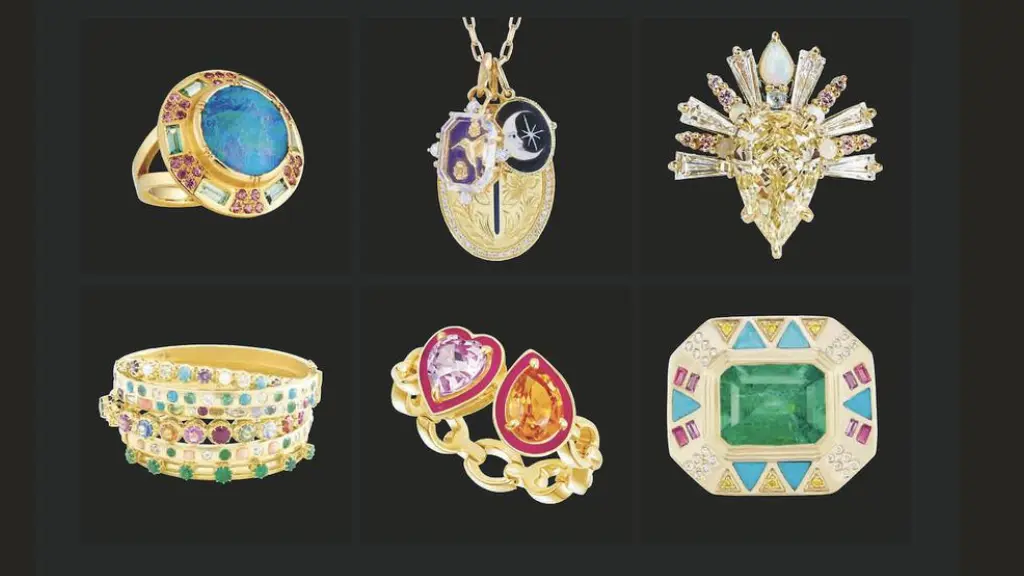In her latest work, Jewelry’s Shining Stars: The Next Generation, Beth Bernstein presents an insightful look into the future of the jewelry industry. As a seasoned author and jewelry historian, Bernstein has a keen eye for spotting talent and innovation, and this book is her tribute to the new wave of designers poised to shape the industry in the coming years.
The jewelry world is evolving, and the next generation of designers is rewriting the rules. They are embracing sustainability, experimenting with unconventional materials, and making bold, individualistic statements. In this blog, we’ll delve into five intriguing extracts from Bernstein’s book that highlight the trends, talent, and techniques defining modern jewelry.
You May Also Like: The Most Instagrammable Villages in Switzerland
1. The Storytelling Power of Jewelry
One of the most captivating themes in Jewelry’s Shining Stars is the idea that jewelry is more than just adornment—it’s a narrative. Bernstein writes:
“The next generation of jewelry designers doesn’t just create pieces; they tell stories, weaving emotion and meaning into their collections, challenging traditional concepts of adornment.”
Jewelry is becoming increasingly personal. Gone are the days when luxury was defined solely by gemstones and metalwork. Today’s designers infuse their work with meaning, drawing from personal experiences, cultural heritage, and global events. Whether it’s a necklace that represents the phases of the moon or a ring symbolizing a personal milestone, this new wave of jewelry is about making connections and sharing stories.
Designers such as Nak Armstrong and Harwell Godfrey are perfect examples of this trend. Their collections are rich with symbolism and attention to detail, transforming jewelry into wearable art that resonates deeply with consumers. Each piece tells a story, inviting wearers to create their own narratives through these intricate designs.
2. A Renaissance in Craftsmanship
In the modern age of fast fashion and mass production, the next generation of jewelers is bringing back the art of true craftsmanship. Bernstein highlights how these artisans are committed to quality and technique:
“At the core of this new wave is a dedication to craftsmanship. Whether through a revival of ancient techniques or an embrace of cutting-edge technology, these designers honor the past while pushing the boundaries of the future.”
Jewelry makers like Lauren Adriana and Alice Cicolini are known for their painstaking attention to detail, combining traditional techniques with modern innovation. Some designers are reviving ancient methods, such as granulation and enameling, while others are embracing new technologies like 3D printing and laser cutting. The result is a blend of old-world skill and futuristic vision.
This renaissance in craftsmanship is appealing to consumers who seek timeless, one-of-a-kind pieces that reflect artistry, dedication, and high-quality materials.
3. Sustainability at the Heart of Jewelry Design
The jewelry industry has often been criticized for its environmental and ethical impacts, from mining practices to labor conditions. However, Jewelry’s Shining Stars reveals how the next generation is making sustainability a priority:
“Sustainability is no longer an afterthought. It’s the heartbeat of this new era in jewelry. Each designer featured has taken on the challenge of ethical sourcing, creating pieces that don’t just sparkle but resonate with conscious consumers.”
As consumer awareness around sustainability grows, so does the demand for ethically sourced materials. Designers like Fernando Jorge and Pippa Small are leading the charge by ensuring that their gemstones are traceable, their metals are recycled, and their manufacturing processes are eco-friendly.
This shift is significant because it reflects a broader change in consumer values. Jewelry lovers today are not just looking for beauty—they want to know the story behind the piece and feel good about how it was made. Ethical sourcing and sustainable practices are becoming as important as the design itself, and this new generation of designers is at the forefront of that movement.
4. Breaking Boundaries with Materials
One of the most exciting developments in modern jewelry is the use of unconventional materials. In her book, Bernstein notes:
“This next generation is fearless in its approach. They mix metals with materials that were once unconventional, blending high and low culture, creating jewelry that is as much a statement of art as it is of luxury.”
Today’s designers are experimenting with materials like ceramics, wood, and even repurposed objects. This approach is a departure from traditional fine jewelry, which often sticks to gold, silver, and platinum. By embracing a wide range of materials, designers like Polly Wales and Sia Taylor are creating pieces that feel fresh, unique, and boundary-pushing.
This trend also aligns with the growing demand for individuality. Consumers want pieces that stand out, that aren’t just carbon copies of the latest trends. These innovative material choices allow for greater creativity and customization, appealing to those who value personal expression through their accessories.
5. Individuality and Identity in Jewelry
Perhaps one of the most compelling themes in Jewelry’s Shining Stars is the celebration of individuality. Bernstein writes:
“What makes this new wave of designers so compelling is their refusal to conform. In a world of mass production, they celebrate individuality, creating pieces that speak to personal style and identity.”
Today’s consumers are more focused on expressing their personal identity through jewelry than ever before. Designers like Pamela Love and Retrouvaí embrace this, creating collections that feel intimate, bespoke, and meaningful. Each piece reflects the designer’s unique aesthetic, as well as the wearer’s individuality.
The rise of custom jewelry is also a reflection of this trend. Clients are seeking out pieces that they can help design or that hold personal significance. Whether it’s incorporating birthstones or crafting a design inspired by a personal experience, the next generation of jewelers is all about fostering deeper connections between jewelry and identity.
Final Thoughts
Beth Bernstein’s Jewelry’s Shining Stars: The Next Generation offers a fascinating look into the future of jewelry design. This new wave of designers is bringing fresh perspectives, ethical values, and bold creativity to the industry. By prioritizing sustainability, reviving craftsmanship, experimenting with materials, and celebrating individuality, they are not only reshaping the jewelry landscape but also influencing the way we think about adornment.
For those passionate about jewelry or eager to discover the next big names in design, Bernstein’s book is an essential read. It’s a celebration of talent and vision that shines a light on where the industry is headed next—one dazzling piece at a time.










